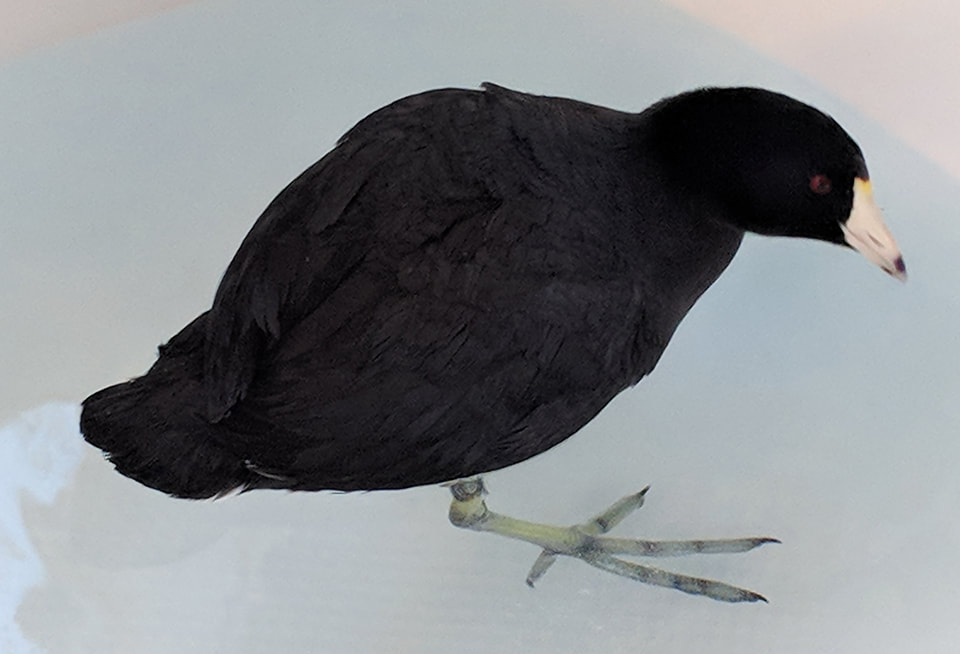|
American Coots are abundant, that's true, but it doesn't take away from them being a fascinating, beautiful, and unique bird. These cuties navigate inland waters year-round, and they fit in a similar niche as a small grebe (like a Horned or Eared). But they are actually part of the Rail family (along with Virginia Rail). Rather than skirt the shoreline like a Virginia though, these guys are eating small fish, crustaceans, bugs, invertebrates and vegetation along the shore while in the water. They are floaters, not walkers. Like the grebes, these birds cannot take off from the ground due to their feet and the size of their wings (which are small in relation to their body size and weight, which is an advantage if you are a swimmer). So, these birds wind up stranded in poor winter weather (like loons, grebes, and ruddy ducks). This girl rebounded remarkably once we dewormed her, warmed her up, and got her fed and hydrated. In fact, she put on 200 grams in 9 days (its amazing how quickly they can respond once the problem is found!). Like other waterbirds that come through here, we made sure her feathers and waterproofing were in shape, and maintained, and she got a pool. Had we not already put our winter pools away (oops, who knew winter would be in March!), she would have had a bigger pool, but instead she had to do with our large indoor water set up, which is a whole lot more work for us as it has to be cleaned very frequently so she stayed clean. (Note - next year, leave winter pools up in aviary!) Why the red eyes? Lots of waterbirds have red eyes as it helps them see underwater. Note the babies have brown eyes, red eyes happen as they reach adulthood. Their leg color also changes, from more green/olive to more and more yellow as they age. And while Grebes and Loons have toenails, nothing compares to the talons on these guys. Just check out the first picture. In fact, these feisty birds will flip over on their backs like a raptor and try to slash you with those sharp, hooked nails (yes, we ALWAYS wear gloves with Coots, ha ha!). The boys are another 200 grams on the girls, so they can be a handful (2 handfulls, ha). The lobes on those pretty yellow-green feet are designed to propel them through the water, highly effective paddles, very cool.
We had the fun time of raising a baby coot last summer. So for fun I've added a parent and two babies. Notably, like most waterbirds, Coots also feed their babies bill to bill. So, even though they are born "precocial" (born with down, able to move away from nest soon), they cannot feed themselves. This is such a wonderful picture of their colorful, adorable babies. Coots may be one of the few birds that can make the global transition we are experiencing, because they are adaptable, can eat a diversity of food, and are productive. Go Coots! |
AboutNative Bird Care's is celebrating its 10th anniversary! Our main focus is song, shore, and waterbirds. We offer specialized care and facilities for these extraordinary birds.. Archives
July 2024
Categories
|




 RSS Feed
RSS Feed